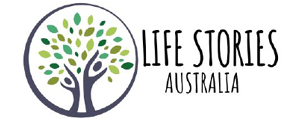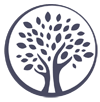A question participants in my memoir writing workshops often ask me is: ‘Where should I start my story? At my birth? An important milestone? A momentous occasion?
If you are writing a life story you may think you have to start with yourbirth and progress chronologically to the present. But you don’t have to adhere to this structure. As the writer, it’s up to you to decide where to drop your readers into your story. You may decide to start at the beginning, somewhere in between or at the end. If you decide to open with the ending you are in good company. None other than the famous writer T.S. Eliot agrees with you.
T.S. Eliot advocated starting a story at the end. He said:
‘What we call the beginning is often the end. And to make an end is to make a beginning. The end is where we start from.’
Moving the ending to the beginning can increase the power of your opening paragraphs. Your aim with the beginning is to intrigue your audience sufficiently that they want to find out more–a writer needs to make the first paragraph the best. The beginning is your ‘calling card’ and its role is to compel your audience to continue reading.

Following are a few tips for writing powerful beginnings:
Make your first paragraph the best
Start with a strong character (most likely yourself) and a compelling situation that creates momentum and energy. If your birth coincided with dramatic world events, start your story with your birth, but if something momentous happened in your life at another point in time start with it and draw the reader into your story with a vivid scene describing the event.
The secret to keeping the attention of readers is value and character, but first you need the hook, the promise that causes them to read the next paragraph, and then the paragraph after that, until you’ve won them over and they decide to stay.
Establish a personal relationship with your reader from the start
Memoir and life story writers may have a personal relationship with their readers although this is not always the case, particularly if your story is published for a public audience rather than family and friends.
Thinking of personal or intimate writing as a ‘date’ with readers leads to an interesting question: Is this conversation external or internal? That is, is writing your life story the equivalent of sitting down in your lounge room with a cup of tea and scones and telling a small group of intimates the story of your life (external), or are you having an internal conversation with yourself while allowing readers to listen in?
Are you addressing an audience or reflecting in private? If you are writing about your childhood, for instance, and you describe a trip to the zoo when you were five-years-old, is the goal to report the facts of the excursion—a relatively descriptive or journalistic objective—or is it something more personal: perhaps reaching into your memory to recapture a distant experience, discover something unseen at the time or reflect on what it means to you today?
Whatever you do, your chances of success increase with your awareness. At some point in your opening paragraphs, you have to know your primary intent and signal it to the reader. If you do that, your reader will look forward to hearing more of what you have to say.
Where did you start your memoir or life story? At the beginning, end or somewhere in between? Let us know in the comments below.
Gabriella Kelly-Davies
www.shareyourlifestory.com.au



Follow Us